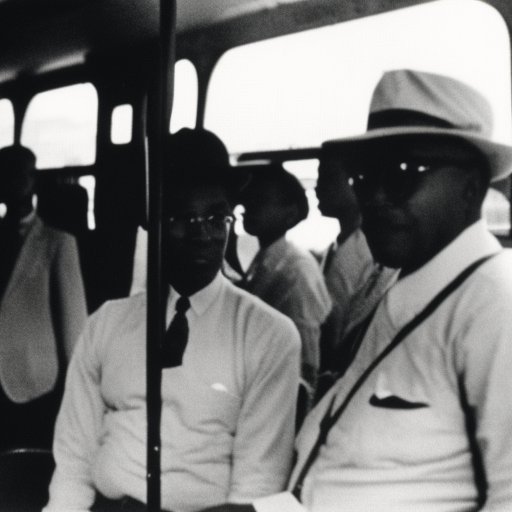Summary:
The Montgomery Bus Boycott was a pivotal event in the Civil Rights Movement that took place from 1955 to 1956 in Montgomery, Alabama. It was sparked by the arrest of Rosa Parks, an African American woman who refused to give up her seat to a white passenger on a city bus. The boycott, organized by the Montgomery Improvement Association (MIA) led by Dr. Martin Luther King Jr., aimed to end racial segregation on public transportation in the city.
Background:
In the 1950s, racial segregation was deeply entrenched in the southern United States. Montgomery, like many other cities, enforced strict segregation laws on public buses. African Americans were required to sit at the back of the bus and give up their seats to white passengers if the front of the bus became full. This system of segregation was degrading and discriminatory, and African Americans were determined to challenge it.
Rosa Parks and the Spark:
On December 1, 1955, Rosa Parks, a seamstress and civil rights activist, boarded a Montgomery city bus after a long day of work. When the bus became crowded, the driver demanded that Parks and three other African American passengers give up their seats for white passengers. While the others complied, Parks refused, stating that she was tired of giving in. She was subsequently arrested and charged with violating segregation laws.
The Boycott:
Parks’ arrest sparked outrage in the African American community, and leaders such as Dr. Martin Luther King Jr. saw an opportunity to challenge the unjust system of segregation. The Montgomery Improvement Association (MIA) was formed, with King as its president, and they called for a boycott of the city’s buses. African Americans were urged to refuse to ride the buses until they were desegregated.
The boycott was a massive success, with the majority of Montgomery’s African American population participating. African Americans organized carpools, walked long distances, and even used mule-drawn carriages as alternative means of transportation. The boycott lasted for 381 days, during which the African American community faced harassment, threats, and violence.
Legal Battle:
In response to the boycott, the Montgomery city government and bus company took legal action to maintain segregation. The case eventually reached the United States Supreme Court, which ruled in favor of the boycotters. On November 13, 1956, the Court declared that segregation on public buses was unconstitutional, violating the Fourteenth Amendment’s guarantee of equal protection under the law.
Impact and Legacy:
The Montgomery Bus Boycott was a significant victory for the Civil Rights Movement. It demonstrated the power of nonviolent protest and collective action in challenging racial segregation. The success of the boycott also propelled Dr. Martin Luther King Jr. into the national spotlight as a prominent civil rights leader.
The boycott inspired similar efforts in other cities across the United States, leading to the eventual desegregation of public transportation in many places. It also served as a catalyst for the broader Civil Rights Movement, inspiring activists and galvanizing support for equal rights.
In conclusion, the Montgomery Bus Boycott was a pivotal event in the fight against racial segregation in the United States. It brought attention to the injustices faced by African Americans and paved the way for future civil rights victories. The determination and resilience of the African American community, along with the leadership of Dr. Martin Luther King Jr., played a crucial role in the success of the boycott and its lasting impact on American history.












